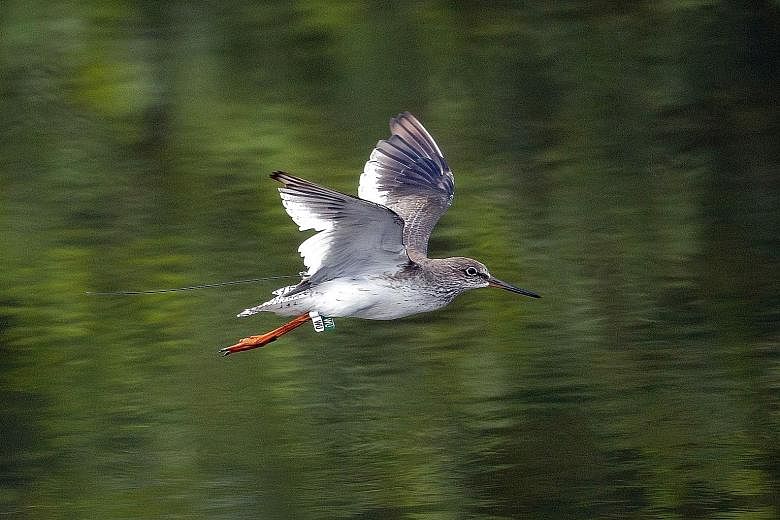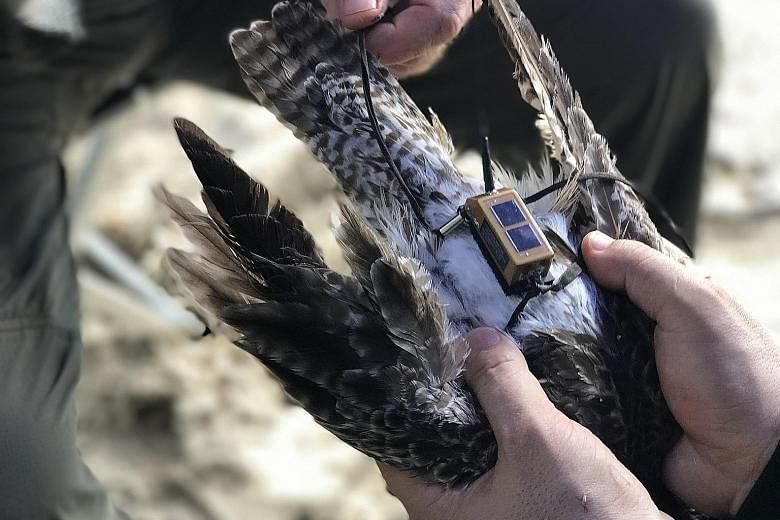The warm weather and rich mudflats of Singapore make the country a tropical paradise for many migratory shorebirds - including those that make arduous journeys across the Himalayan mountain range, a new study has found.
This finding puts Singapore at the intersection of two major flyways, the superhighways in the air that migratory birds take every year to escape the winter chill in the Northern Hemisphere.
Previously, Singapore was thought to be a stopover only along the East Asian-Australasian Flyway, the world's largest migratory route, which runs between the Arctic Circle in the north and Australia and New Zealand in the south.
But the new study showed that some birds which spend their winters in Singapore journeyed here using the Central Asian Flyway across the Himalayas.
The latest study was published last Friday in scientific journal Nature's Scientific Reports.
It was co-authored by researchers from the National Parks Board (NParks), who had made their discovery using a suite of bird tracking technology deployed on common redshanks and whimbrels, two species of birds known to spend the Northern Hemisphere winter months in Singapore.
About 2,000 migratory shorebirds from more than 40 species stop over here between August and March every year, visiting places such as the Sungei Buloh Wetland Reserve and Pulau Ubin.
"This is the first time that shorebirds spending their winter months here in Singapore were shown to have migrated across the Himalayas," said the study's lead author, Mr David Li, NParks' manager for conservation at the Sungei Buloh Wetland Reserve.
The latest findings provide another clue to the mysteries surrounding bird migration, a phenomenon considered one of nature's most spectacular, with the diminutive feathered travellers taking cues from the stars in the sky or landmarks on earth to make journeys spanning thousands of kilometres.
The five-year study from 2015 to last year involved tagging common redshanks and whimbrels in Singapore with small, lightweight satellite tags or geolocators.
According to data gleaned from 15 birds - 10 common redshanks and five whimbrels - four had navigated across the Himalayas at around 5,000m to 6,000m above sea level during the northward migration, while another three made the crossing during the southward migration.
Mr How Choon Beng, NParks' director for wildlife management and outreach, said that while humans consider the mountain range a daunting physical barrier, it may not be as big a challenge for birds.
The researchers hypothesise that those birds chose to fly across the Himalayas instead of skirting the mountain range to reduce flying time, as the direct route reduces the distance to and from the birds' breeding grounds in the Qinghai-Tibet Plateau by around 600km.
Ms Yang Shufen, NParks' director for conservation at the Sungei Buloh Wetland Reserve, said the latest findings have implications for conservation strategies for shorebirds.
"The study illustrates the value of conserving wetland habitats, including mangroves, mudflats and freshwater marshes in Singapore, to provide migratory birds using either flyway with feeding or roosting sites along their stopover here," she said.
She noted that many conservation initiatives in Singapore focus on the East Asian-Australasian Flyway, with NParks establishing partnerships with other conservation agencies in nations along this flyway.
But the data shows that more partnerships can be forged along the Central Asian Flyway as well.



